How to find bots on YouTube: external commentator interaction patterns
Hello! This is a small post (with lots of pictures) about visualizing and analyzing comments on YouTube. Previous posts: 1 , 2 .
This time we’ll talk about comments that are different from most other comments and are presented as separate regions. Usually they are associated with the behavior of bots, but it may be another autonomous community of commentators. What are they and how to find them on YouTube? Let's find out.
If we briefly reproduce our research hypothesis, the interaction of commentators is manifested in stable and reproducible forms. We call them patterns.
The difference and diversity of patterns are easiest to demonstrate on the spatial and geometric arrangement of comments relative to each other. To do this, we use the visualization of comments on this channel :
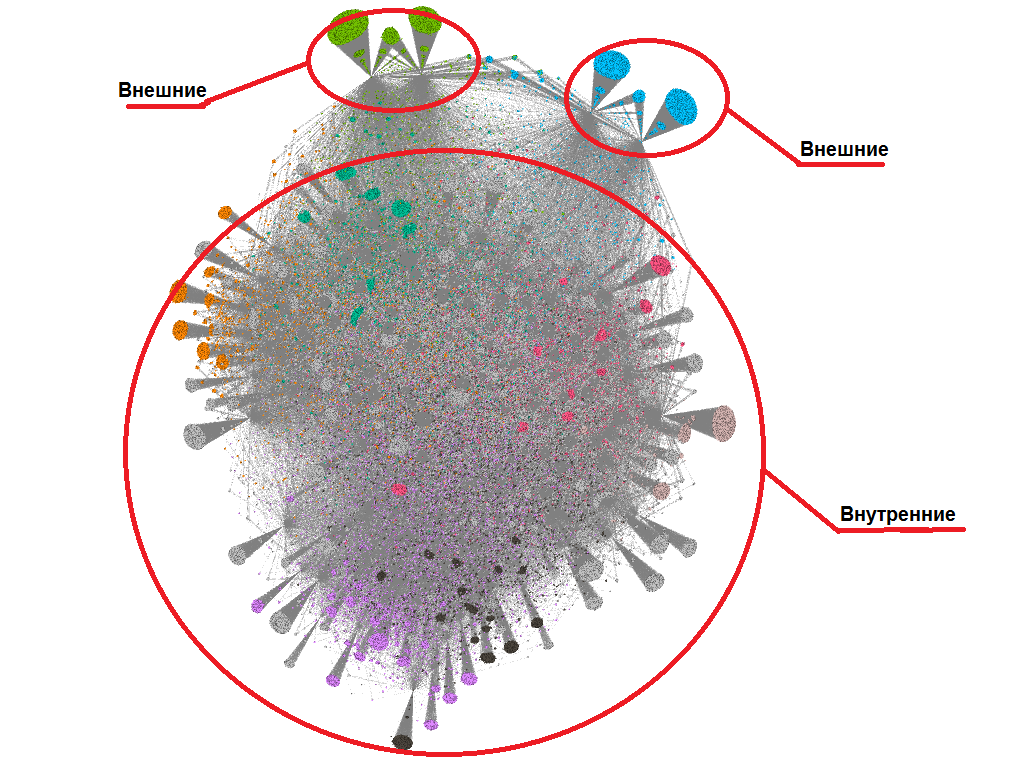
At least two categories of patterns are clearly distinguished on the visualization - internal and external.
Internal patterns refer to comments that are associated with most other comments. The presence of internal patterns indicates the formation of a constant audience of commentators. We will talk more about the types of internal patterns next time, as this topic requires detailed research. And now we turn to the study of external patterns.
External comments are loosely associated with most other comments. At the same time, some external patterns may demonstrate a strong interaction of a localized comment group (clustering), but it manifests itself only to a certain small community, and this group is weakly associated with most comments. Therefore, we introduce additional concepts of external patterns with weak and strong connections.
In qualitative research, external commentators are presented by the audience, which demonstrates a narrow specialization of actions. These actions are usually associated with the behavior of bots and other representatives of the “artificial audience” (prisms and so on). Their difference from “natural” commentators is in collective actions aimed at a specific goal.
And now we will consider some types of external comments on the example of YouTube commentators.
To study the external commentators and the interaction patterns peculiar to them, the type of which we have identified as “Bots” and “Prizolovs”, we will consider the comments of channel 1 .
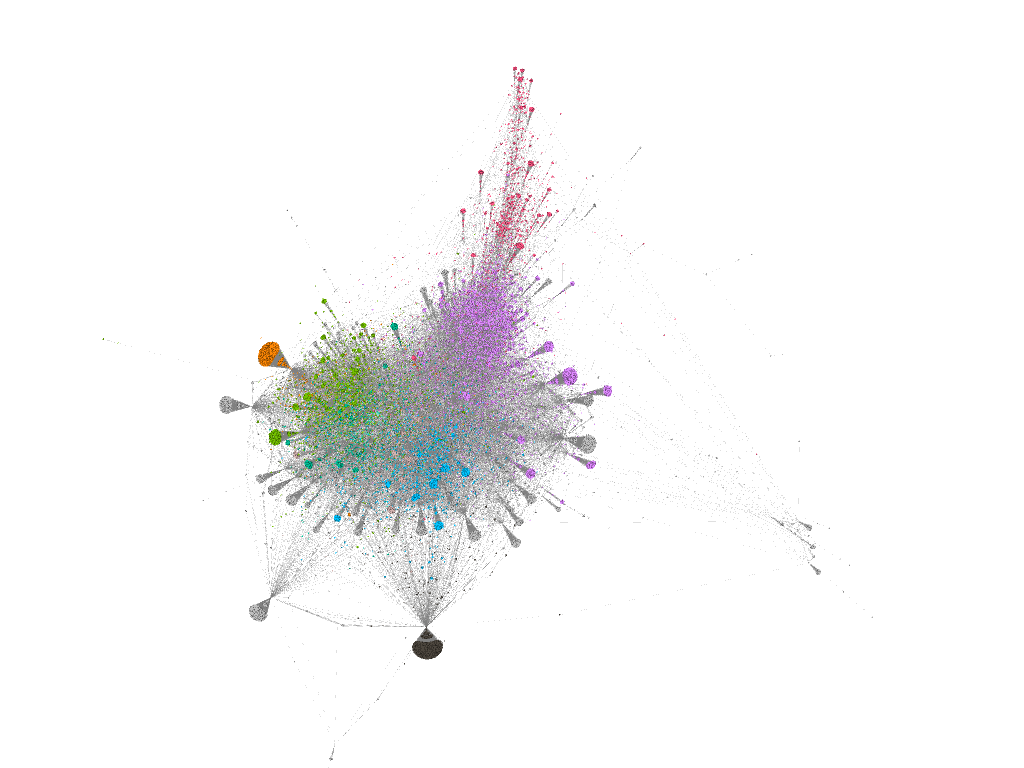
In the northern part of the visualization there is a red “tail” of comments.

For the analysis, comments were taken from the commercials 201, 349, 375, 424, 433, 464.
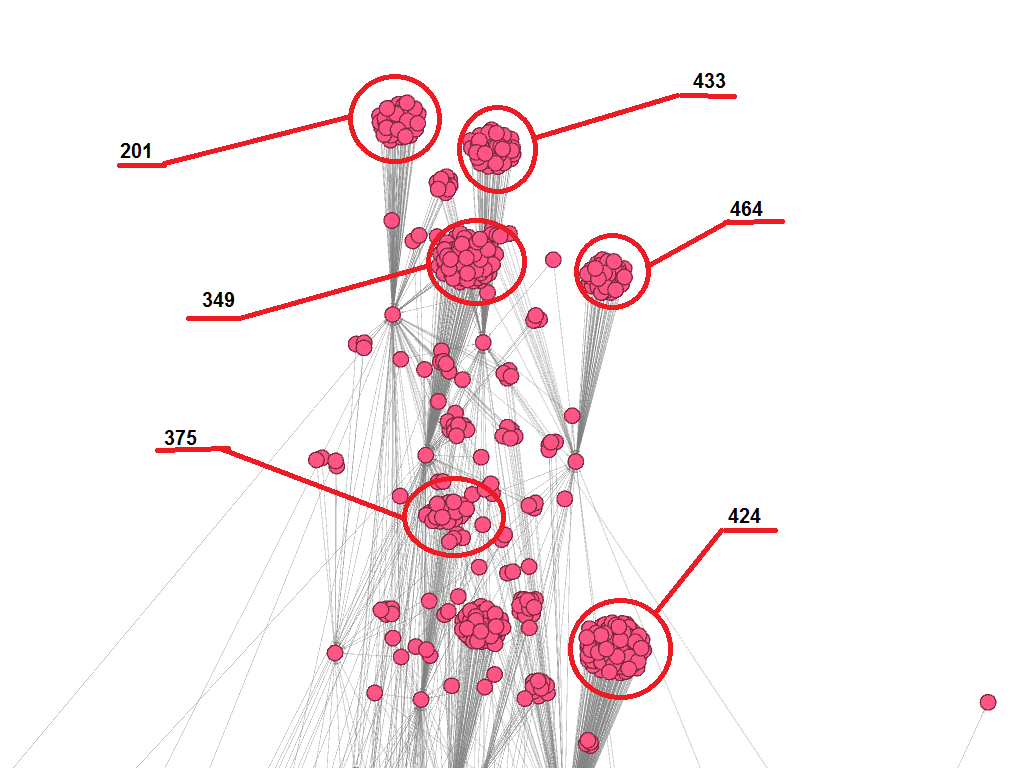
Basically, these are similar comments on the commercials about the products of one of the toy manufacturers.
Movie 201 :
Movie 349 :
Movie 375 :
Clip 424 :
Clip 433 :
Movie 464 :
In the first approximation, this type of commenting is very similar to the behavior of bots: the same type of statements in a positive tone, the same type of construction of sentences with a slight rearrangement of their parts. However, if we assume that commentators are adults who nostalgic for toys from the nineties and write in a similar style, the assessment of comments may change, that is, a full-fledged quantitative and qualitative content analysis is needed for a final assessment.
For comparison, the tonality of comments were taken comments to the roller 377 from the center of the cloud of internal comments:
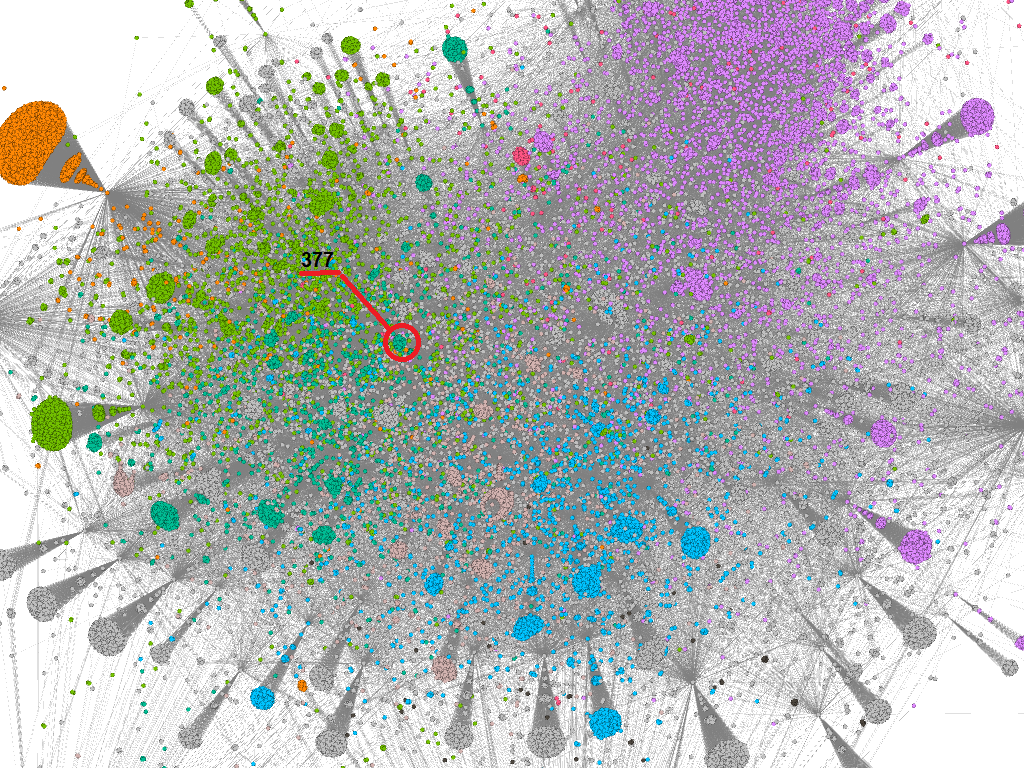
The tonality and style of comments is noticeably different from those presented above. The type of commentators is completely different, however, it also has a common tone and style. At least, we can talk about the existence of two types of commentators on the channel. They are segmented and weakly interact with each other, some are many, and others are few.
The next segment is located in the gray zone in the southeast:
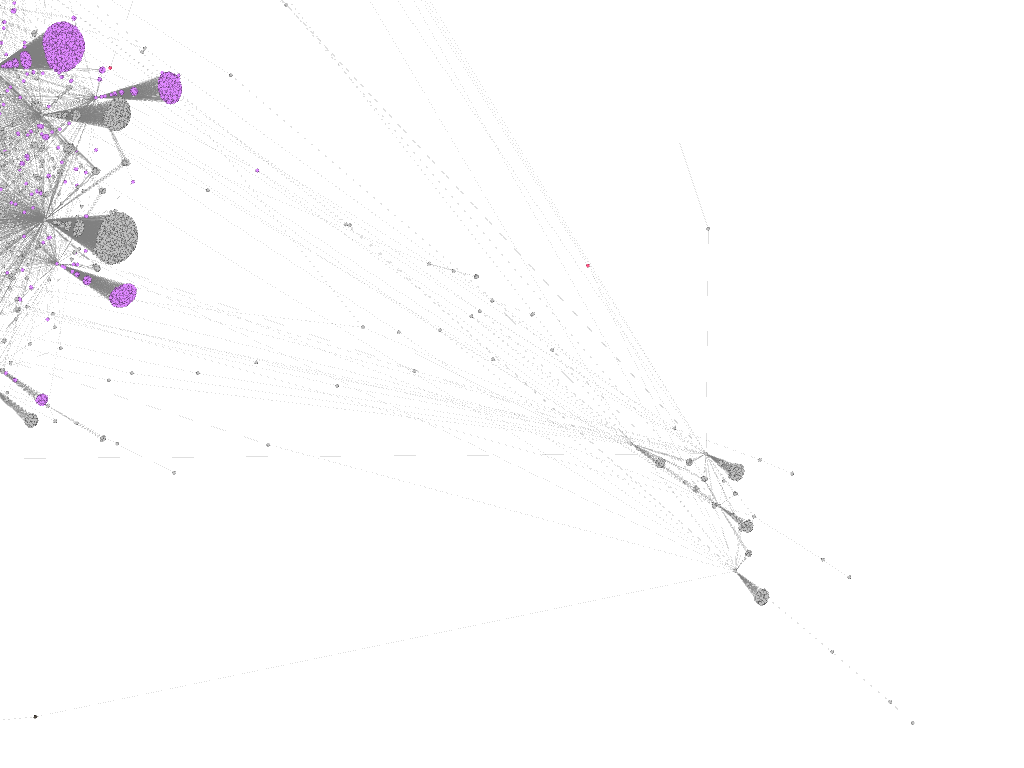
Rollers reviewed: 36, 436, 472, 511. All rollers are associated with contests from one of the toy manufacturers.
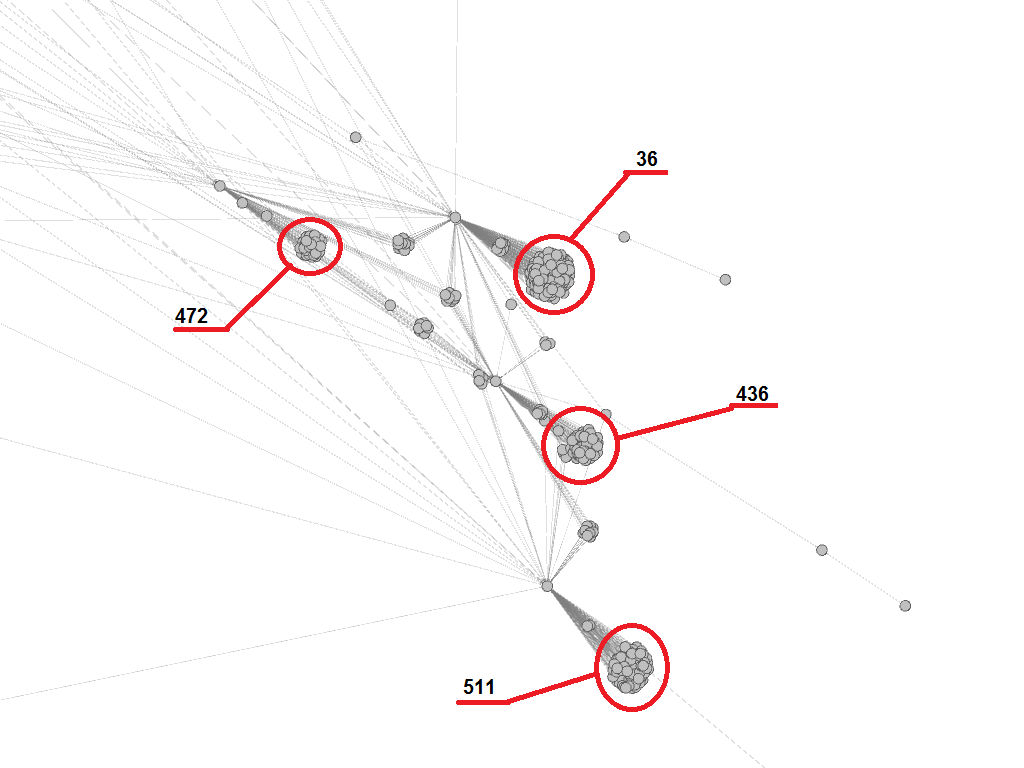
Movie 511 :
Clip 436 :
Movie 36 :
Movie 472 :
From the content of the screenshots, we can conclude that this is a segmented audience of commentators, and it is mainly focused on participating in the competition. To identify it, we used the definition of “prisms” common in SMM.
Consider the comments for the channel 2 commercials :
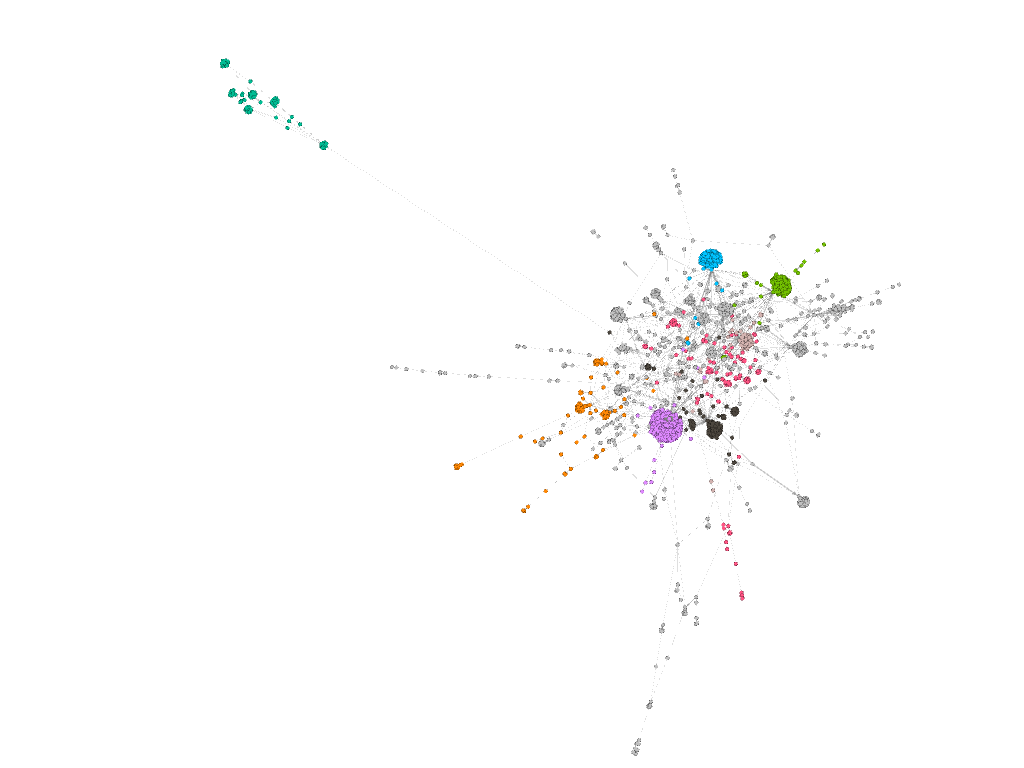
We are interested in an isolated (emerald) region of commentators in the north-west. For the analysis selected comments to the six videos.

Movie 4 :
Movie 21 :
Movie 90 :
Movie 100 :
Clip 113 :
Video 180 :
The tonality and style of comments are the same. In general, conclusions from the previous example with the pattern “Bots” (channel 1) are appropriate for comments.
For comparison, selected control video 163 :

Despite a similar theme with previous videos (overweight), the tone and style of comments is much more diverse.
Based on the content of the screenshots, we can assume that the main goal of the segmented group of comments is to promote videos on a specific topic (the fight against overweight).
Consider channel 3 , the video of which is attacked by spam bots:
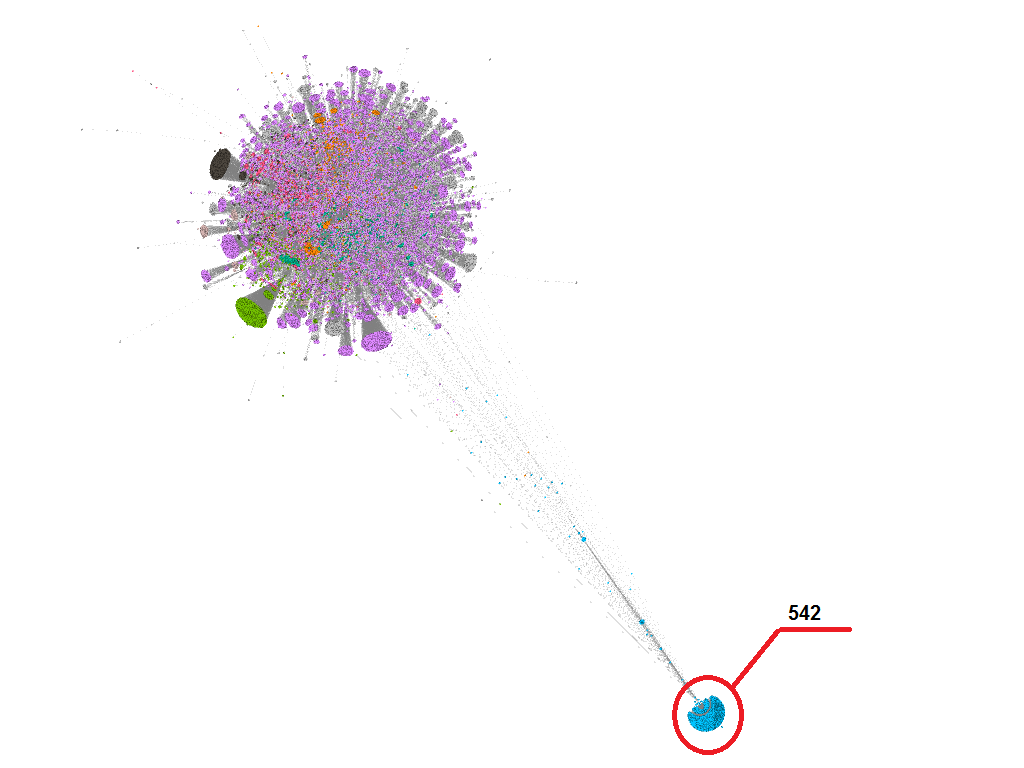
Movie 542 :
Comments are monotonous and have the same goal - advertising websites.
Naturally, not all segmented comment groups are the result of a bot attack. As an example, consider the comments on the channel 4 video :
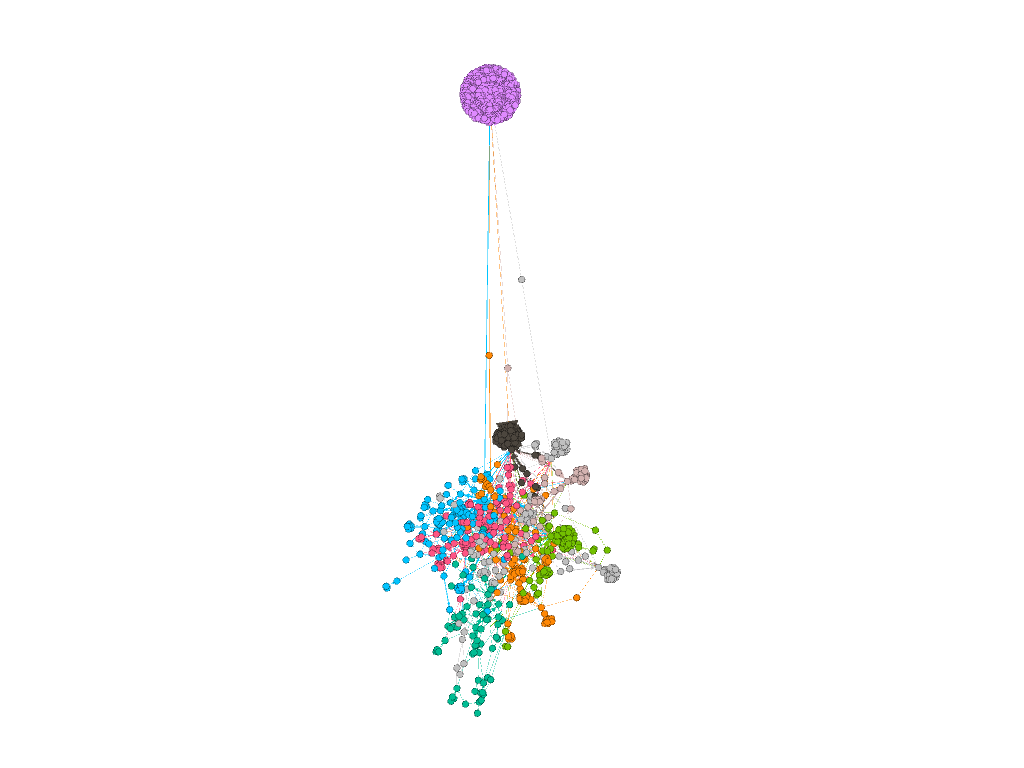
From the content of the screenshot and the description of the video it is clear that we are dealing with unique English-language commentators on the Russian-language channel, since this video is original content designed for an English-speaking audience.
In general, the analysis of the external regions of the visualization of comments showed that they correspond to isolated audiences, markedly different from the main part of commentators on YouTube channels. Naturally, in each case, a detailed study of the content of comments is necessary. However, the fact that working with big data, we can almost immediately identify regions that are potentially populated by bots and other artificial commentator groups, makes it possible to use this approach in ranking and evaluating YouTube channels.
This time we’ll talk about comments that are different from most other comments and are presented as separate regions. Usually they are associated with the behavior of bots, but it may be another autonomous community of commentators. What are they and how to find them on YouTube? Let's find out.
On the research hypothesis: external and internal comments
If we briefly reproduce our research hypothesis, the interaction of commentators is manifested in stable and reproducible forms. We call them patterns.
The difference and diversity of patterns are easiest to demonstrate on the spatial and geometric arrangement of comments relative to each other. To do this, we use the visualization of comments on this channel :

At least two categories of patterns are clearly distinguished on the visualization - internal and external.
Internal patterns refer to comments that are associated with most other comments. The presence of internal patterns indicates the formation of a constant audience of commentators. We will talk more about the types of internal patterns next time, as this topic requires detailed research. And now we turn to the study of external patterns.
External comments are loosely associated with most other comments. At the same time, some external patterns may demonstrate a strong interaction of a localized comment group (clustering), but it manifests itself only to a certain small community, and this group is weakly associated with most comments. Therefore, we introduce additional concepts of external patterns with weak and strong connections.
In qualitative research, external commentators are presented by the audience, which demonstrates a narrow specialization of actions. These actions are usually associated with the behavior of bots and other representatives of the “artificial audience” (prisms and so on). Their difference from “natural” commentators is in collective actions aimed at a specific goal.
And now we will consider some types of external comments on the example of YouTube commentators.
Patterns "Bots" and "Prizolovs"
To study the external commentators and the interaction patterns peculiar to them, the type of which we have identified as “Bots” and “Prizolovs”, we will consider the comments of channel 1 .

In the northern part of the visualization there is a red “tail” of comments.

For the analysis, comments were taken from the commercials 201, 349, 375, 424, 433, 464.

Basically, these are similar comments on the commercials about the products of one of the toy manufacturers.
Movie 201 :
Screenshot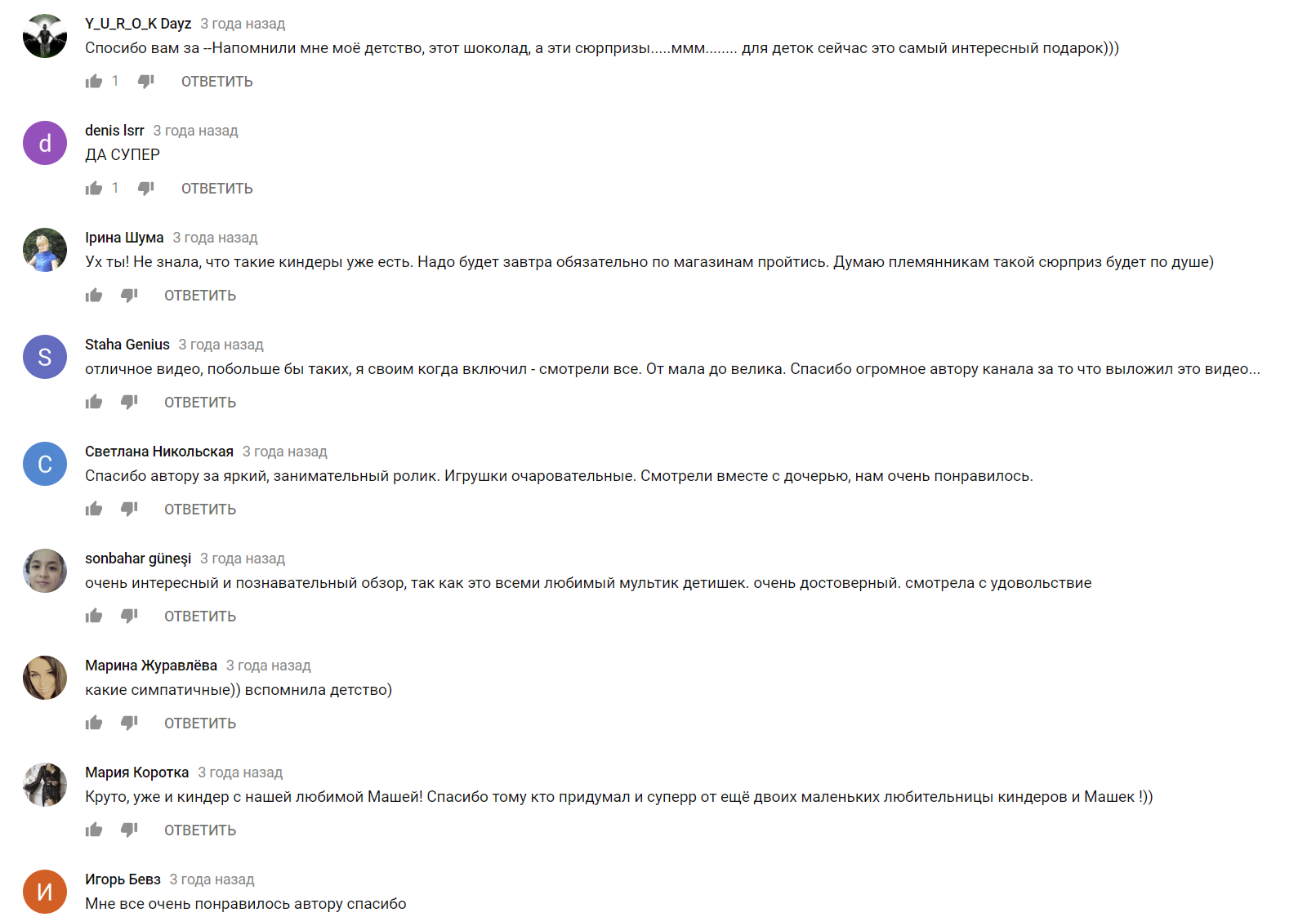

Movie 349 :
Screenshot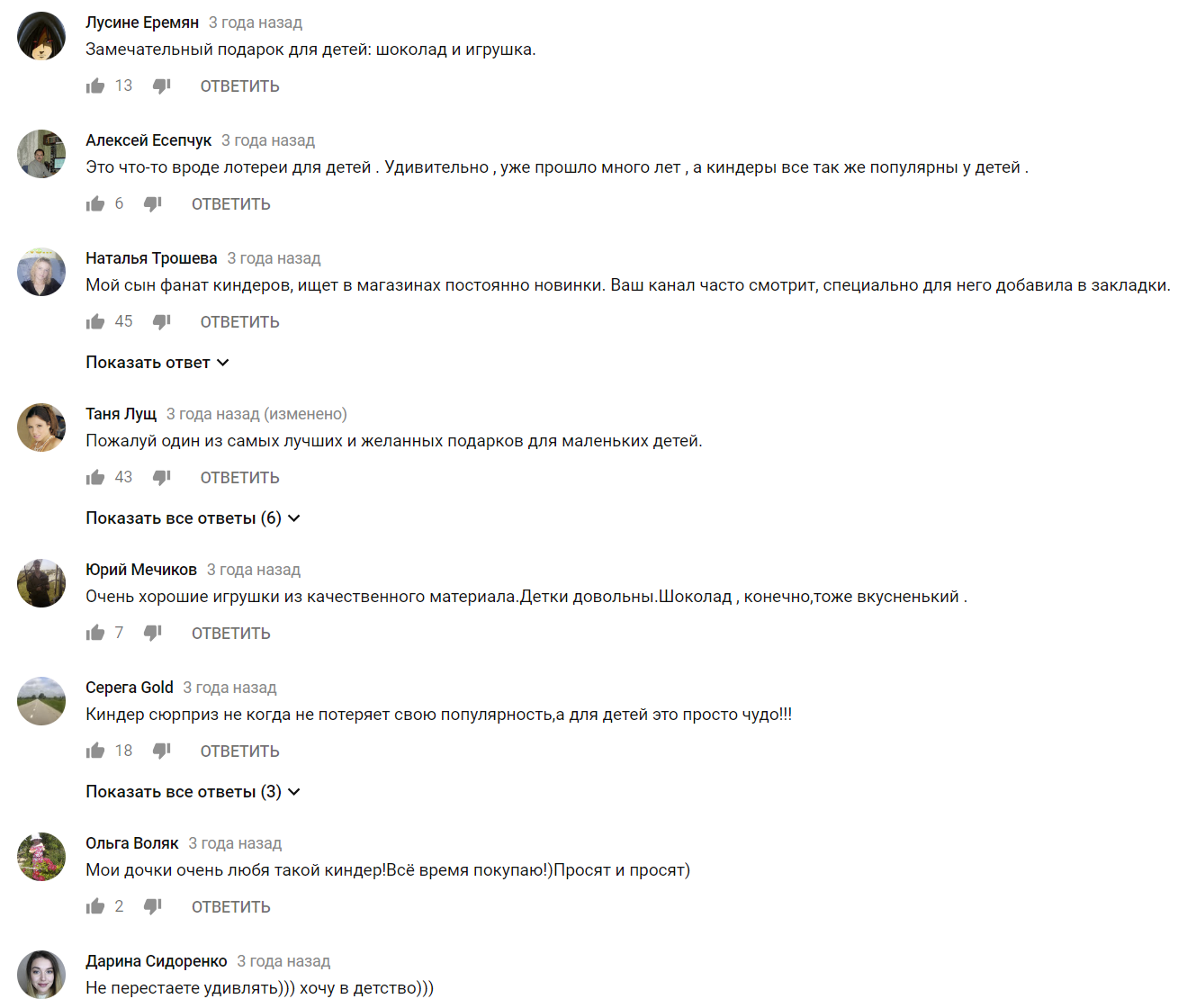

Movie 375 :
Screenshot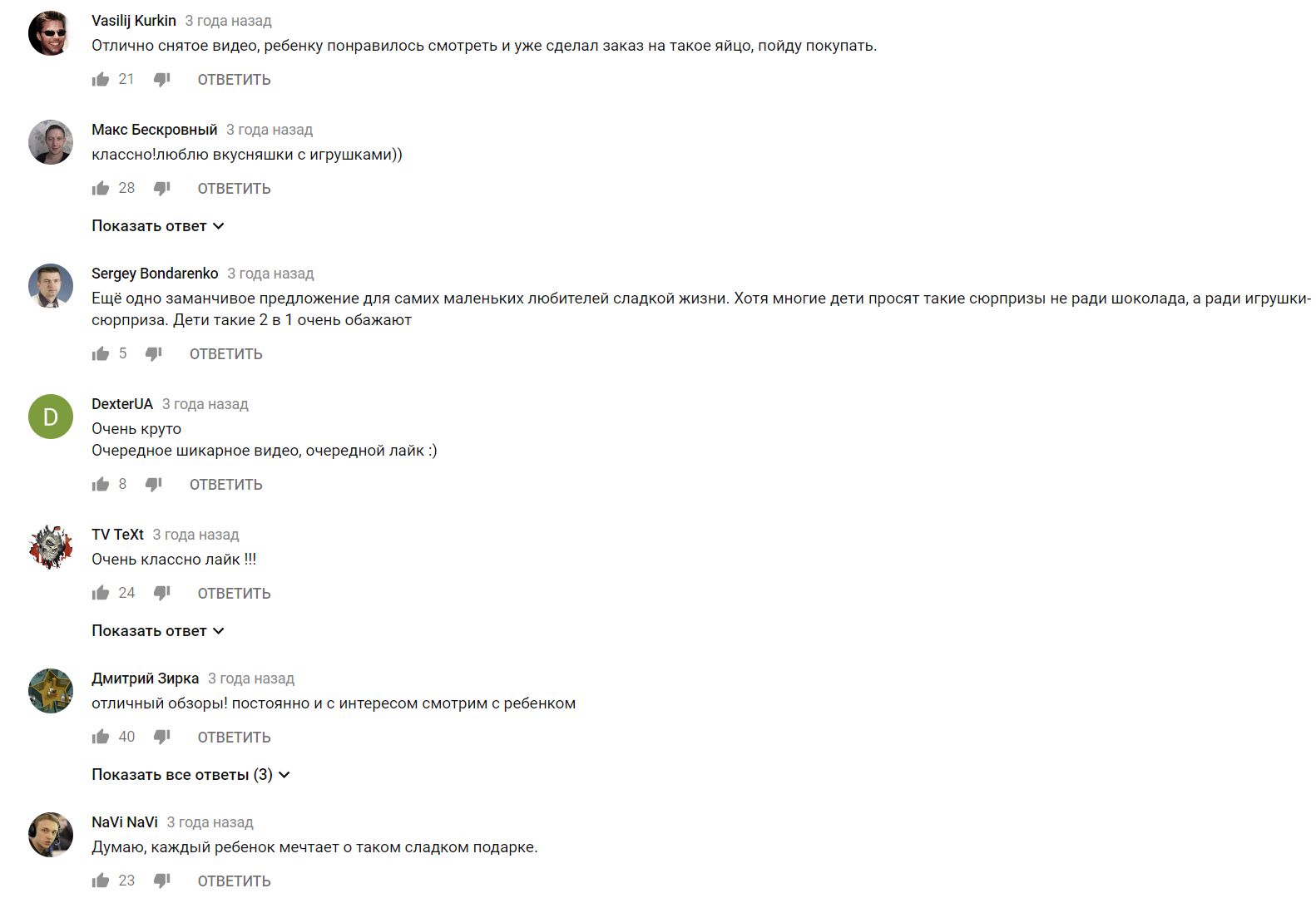

Clip 424 :
Screenshot

Clip 433 :
Screenshot

Movie 464 :
Screenshot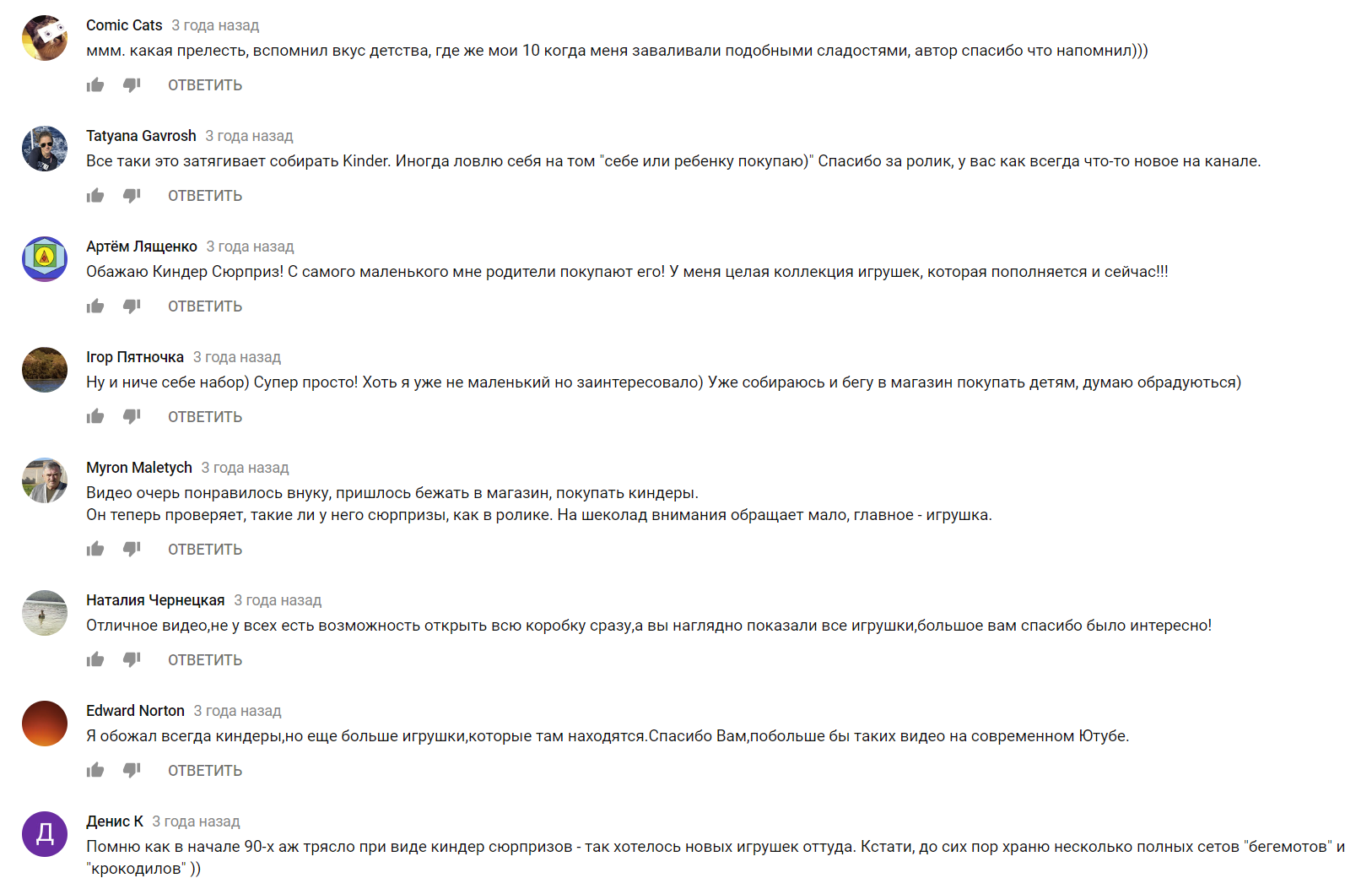

In the first approximation, this type of commenting is very similar to the behavior of bots: the same type of statements in a positive tone, the same type of construction of sentences with a slight rearrangement of their parts. However, if we assume that commentators are adults who nostalgic for toys from the nineties and write in a similar style, the assessment of comments may change, that is, a full-fledged quantitative and qualitative content analysis is needed for a final assessment.
For comparison, the tonality of comments were taken comments to the roller 377 from the center of the cloud of internal comments:

Screenshot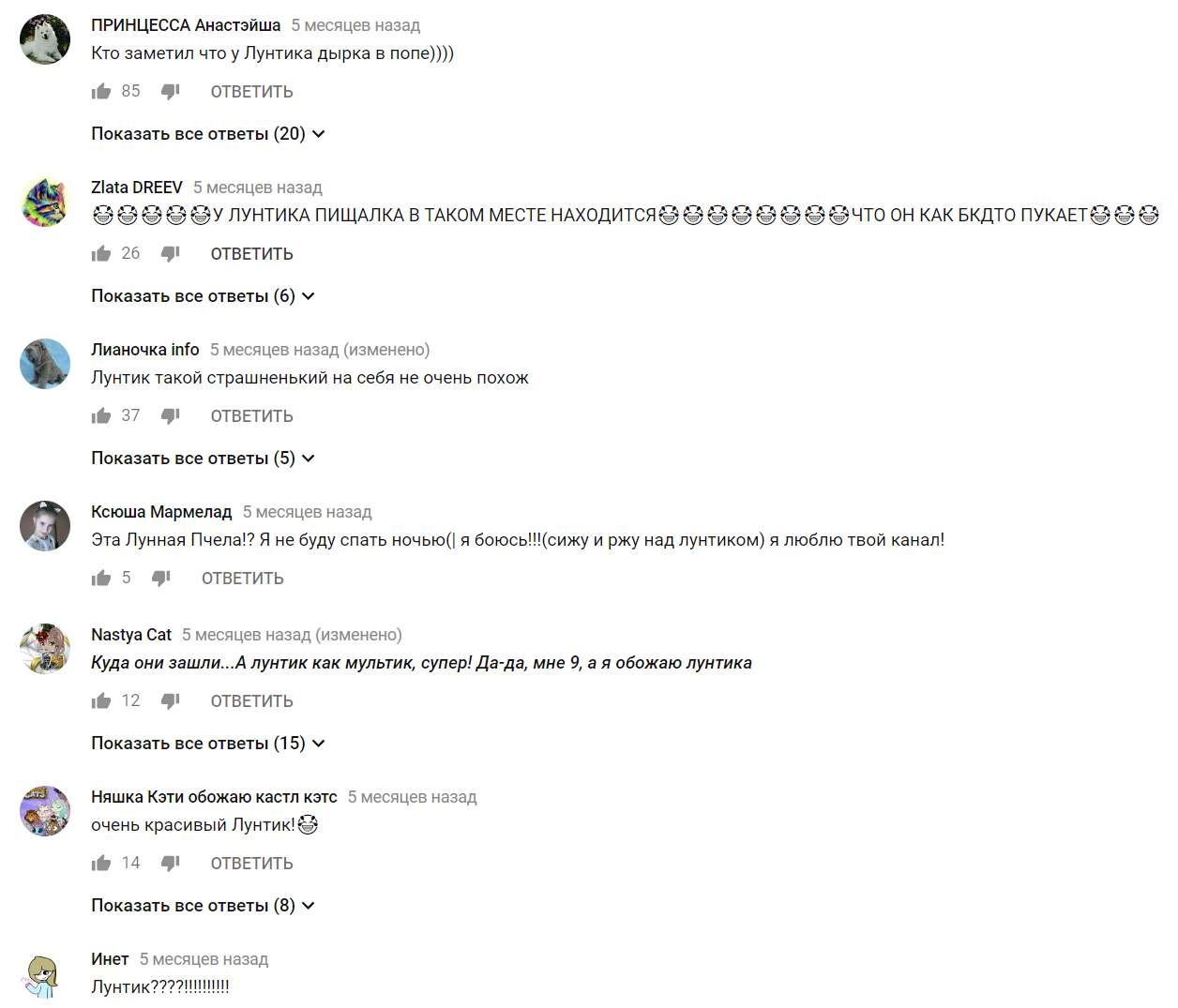

The tonality and style of comments is noticeably different from those presented above. The type of commentators is completely different, however, it also has a common tone and style. At least, we can talk about the existence of two types of commentators on the channel. They are segmented and weakly interact with each other, some are many, and others are few.
The next segment is located in the gray zone in the southeast:

Rollers reviewed: 36, 436, 472, 511. All rollers are associated with contests from one of the toy manufacturers.

Movie 511 :
Screenshot

Clip 436 :
Screenshot

Movie 36 :
Screenshot

Movie 472 :
Screenshot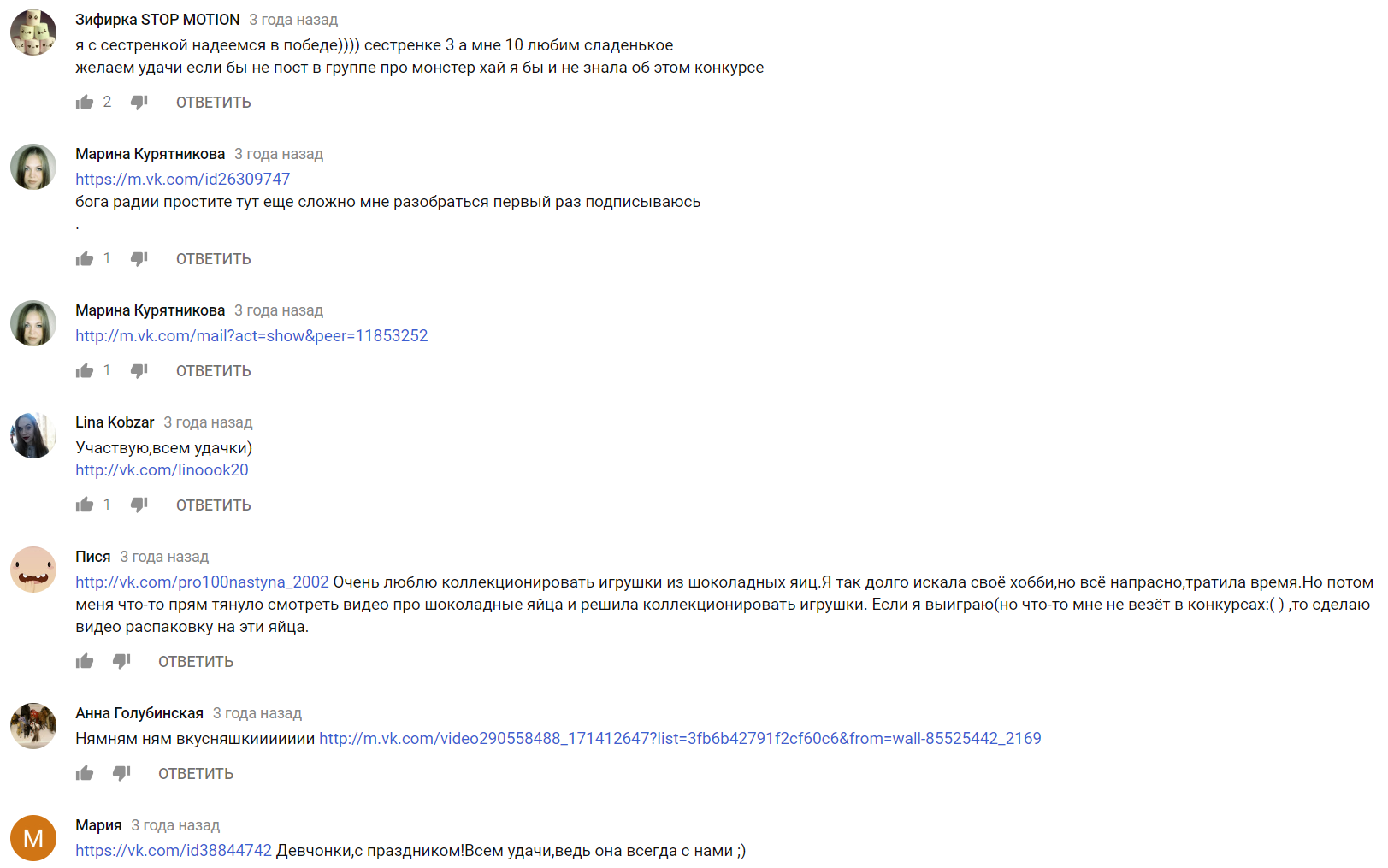

From the content of the screenshots, we can conclude that this is a segmented audience of commentators, and it is mainly focused on participating in the competition. To identify it, we used the definition of “prisms” common in SMM.
Consider the comments for the channel 2 commercials :

We are interested in an isolated (emerald) region of commentators in the north-west. For the analysis selected comments to the six videos.

Movie 4 :
Screenshot

Movie 21 :
Screenshot

Movie 90 :
Screenshot

Movie 100 :
Screenshot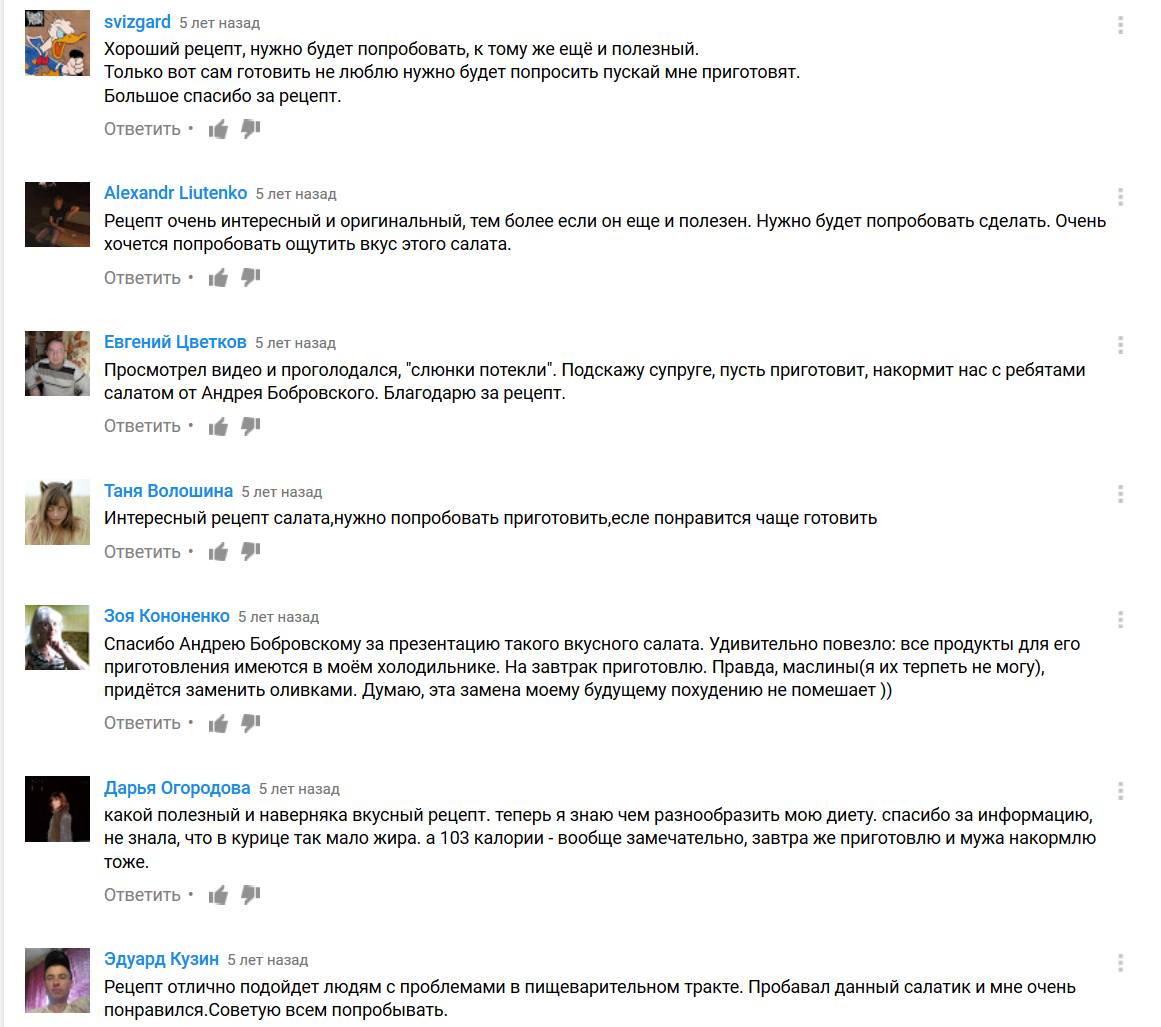

Clip 113 :
Screenshot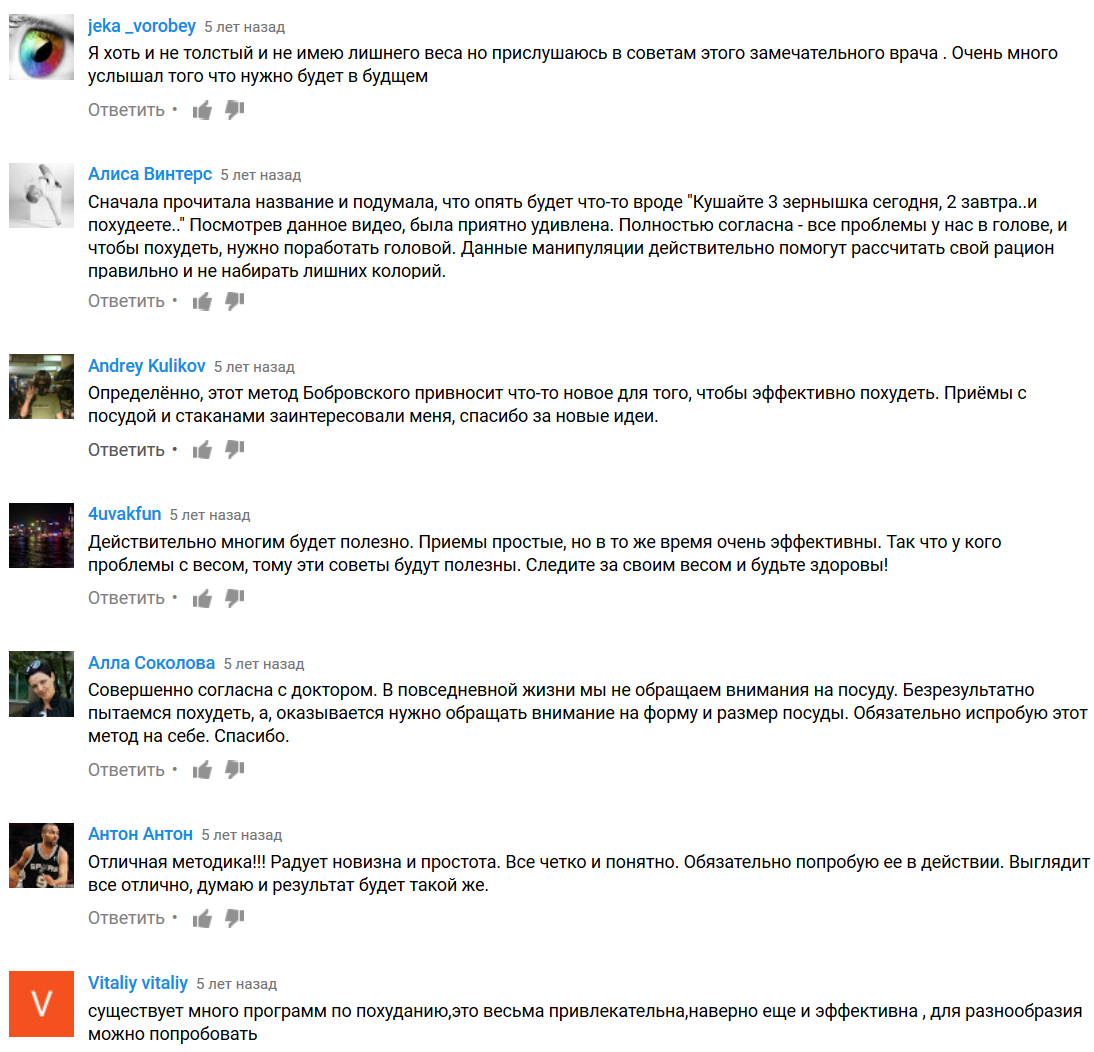

Video 180 :
Screenshot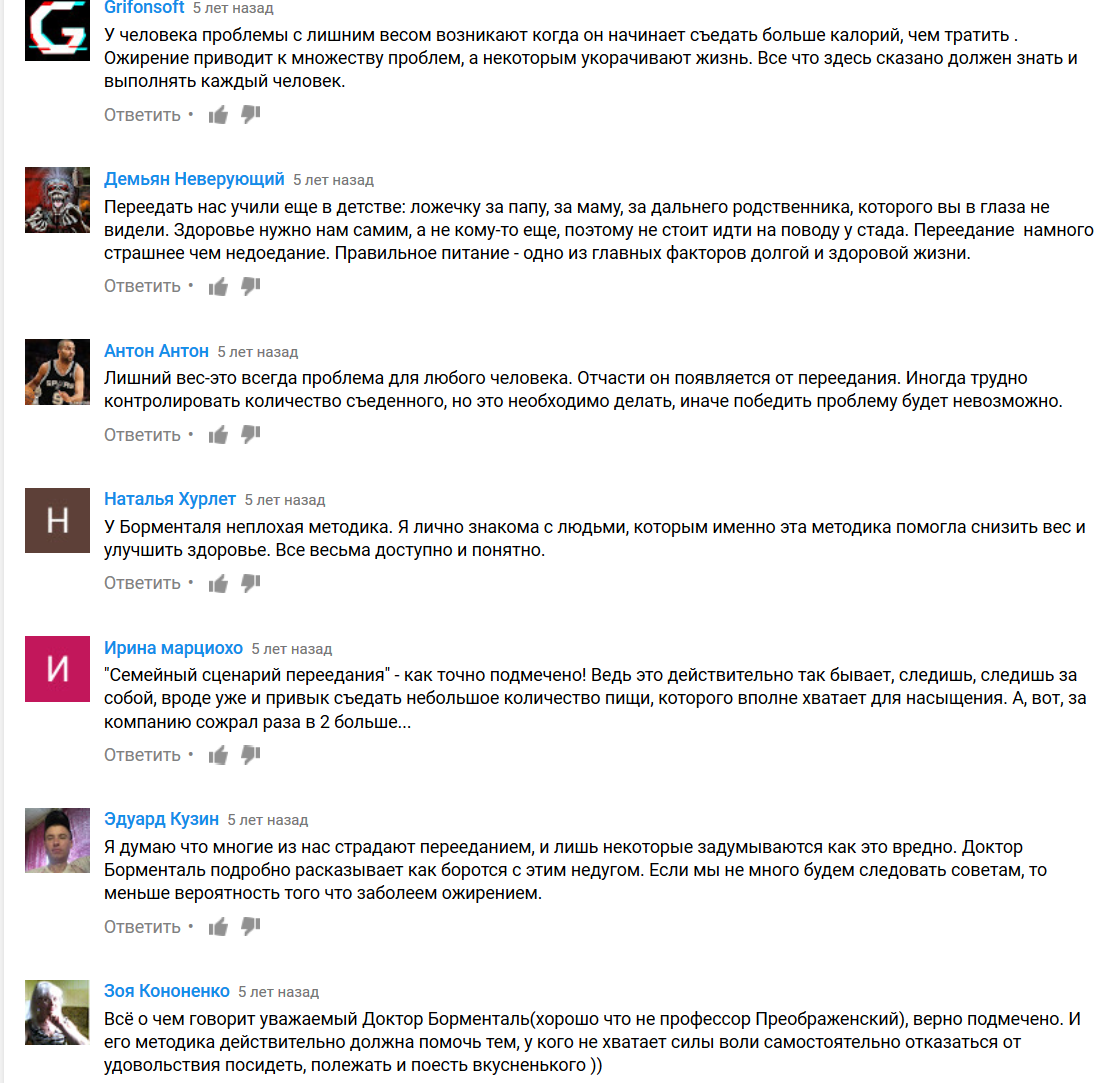

The tonality and style of comments are the same. In general, conclusions from the previous example with the pattern “Bots” (channel 1) are appropriate for comments.
For comparison, selected control video 163 :

Screenshot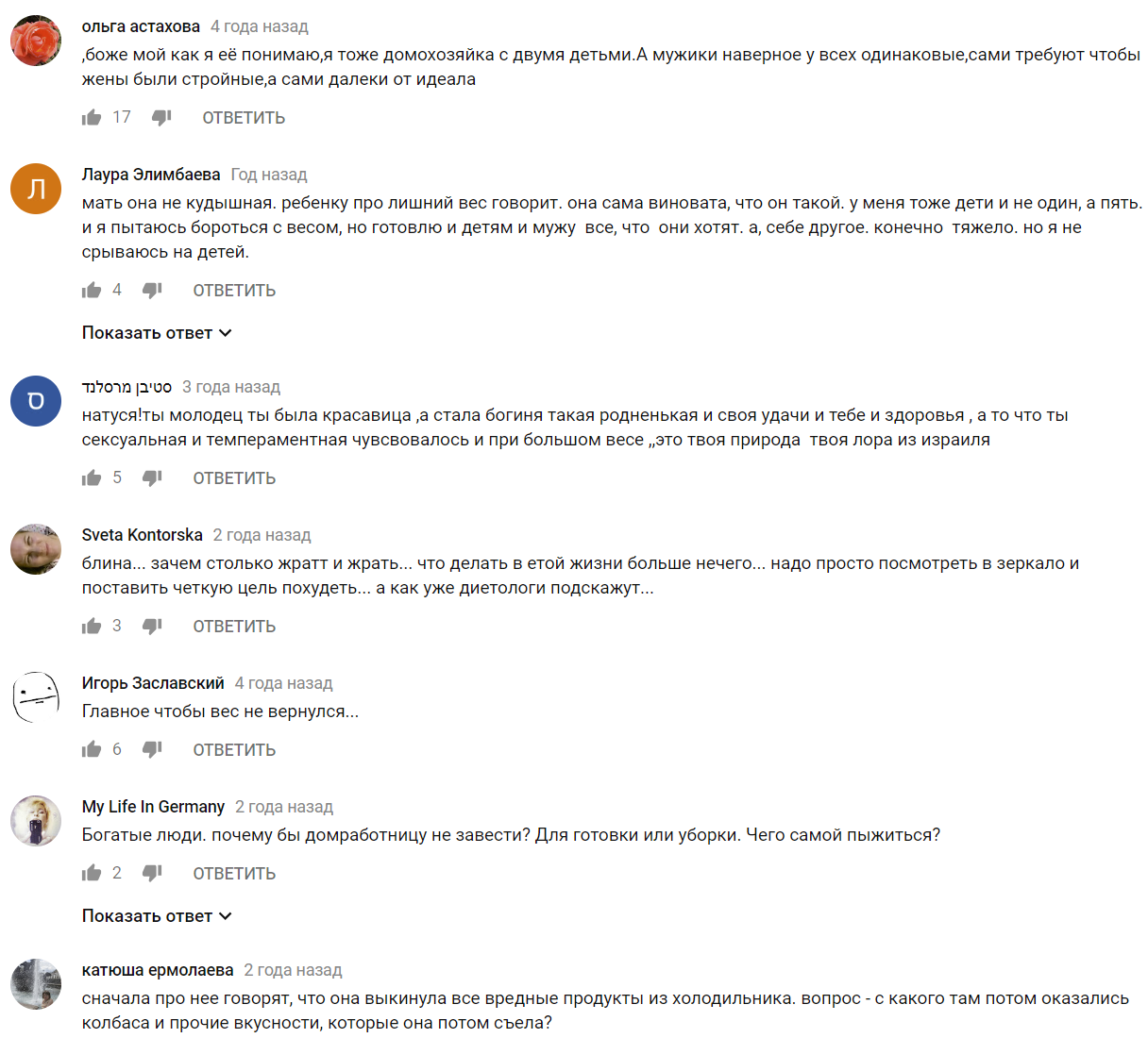

Despite a similar theme with previous videos (overweight), the tone and style of comments is much more diverse.
Based on the content of the screenshots, we can assume that the main goal of the segmented group of comments is to promote videos on a specific topic (the fight against overweight).
Consider channel 3 , the video of which is attacked by spam bots:

Movie 542 :
Screenshot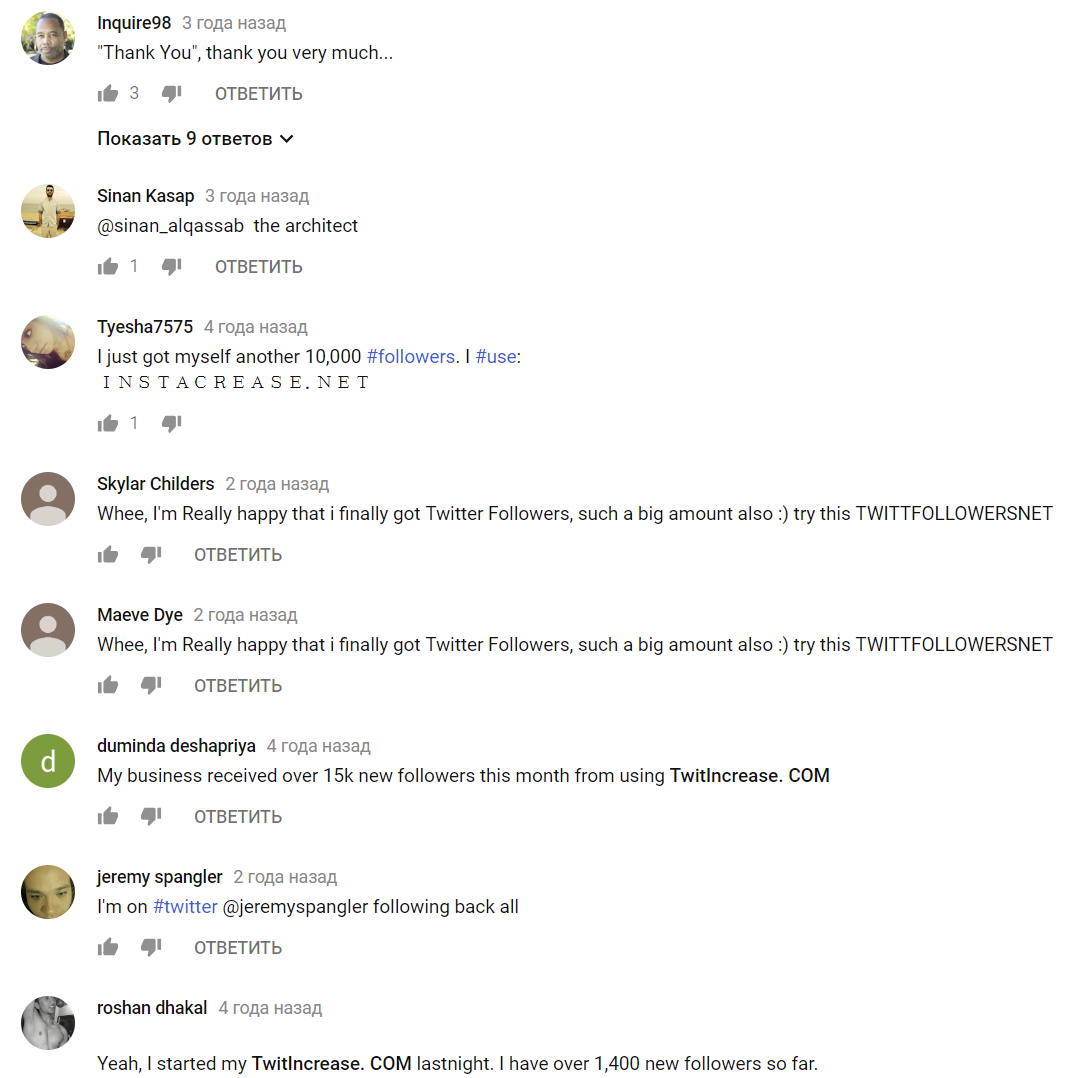

Comments are monotonous and have the same goal - advertising websites.
Pattern "Foreigners"
Naturally, not all segmented comment groups are the result of a bot attack. As an example, consider the comments on the channel 4 video :

Screenshot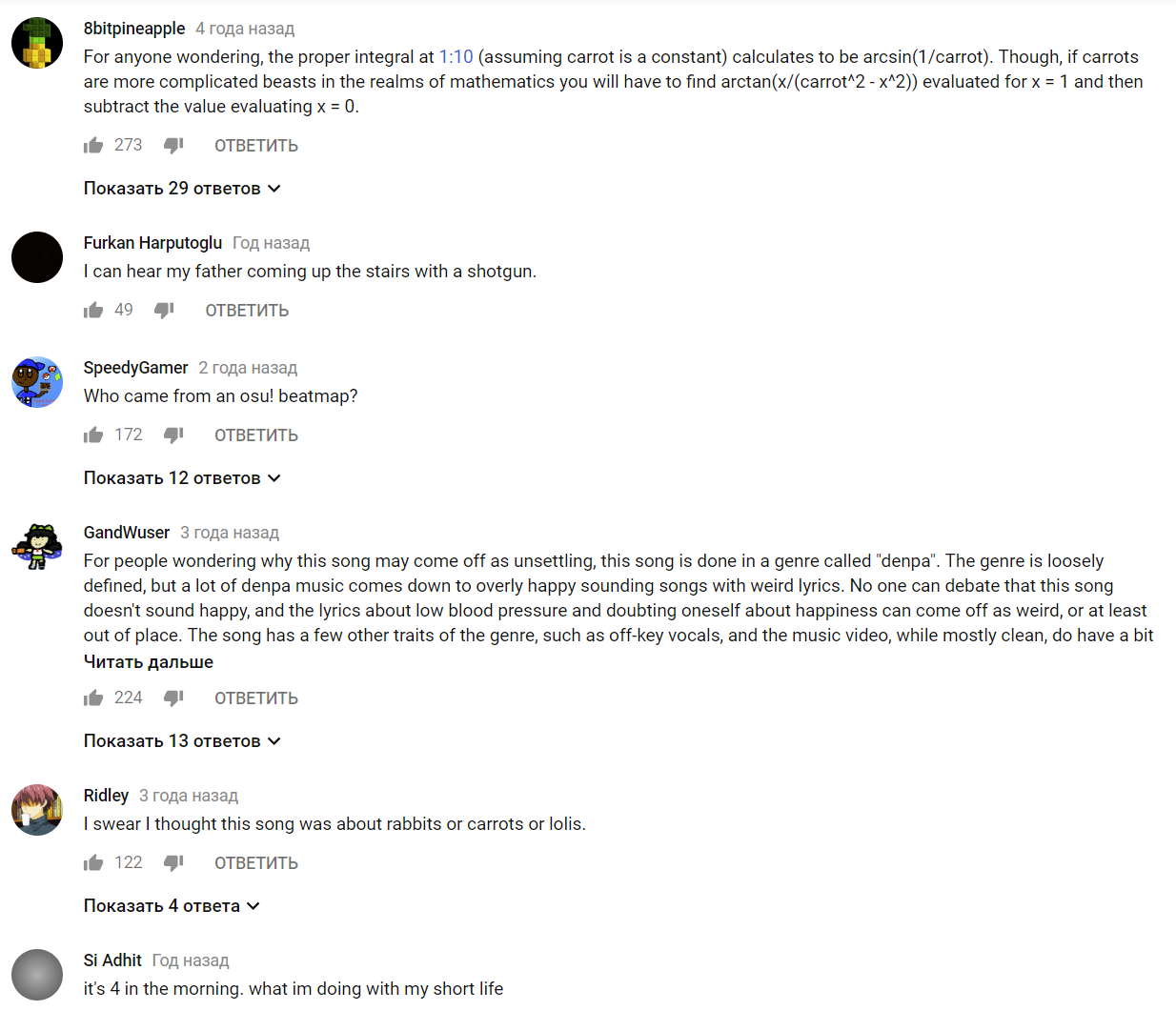

From the content of the screenshot and the description of the video it is clear that we are dealing with unique English-language commentators on the Russian-language channel, since this video is original content designed for an English-speaking audience.
We summarize the data
In general, the analysis of the external regions of the visualization of comments showed that they correspond to isolated audiences, markedly different from the main part of commentators on YouTube channels. Naturally, in each case, a detailed study of the content of comments is necessary. However, the fact that working with big data, we can almost immediately identify regions that are potentially populated by bots and other artificial commentator groups, makes it possible to use this approach in ranking and evaluating YouTube channels.
